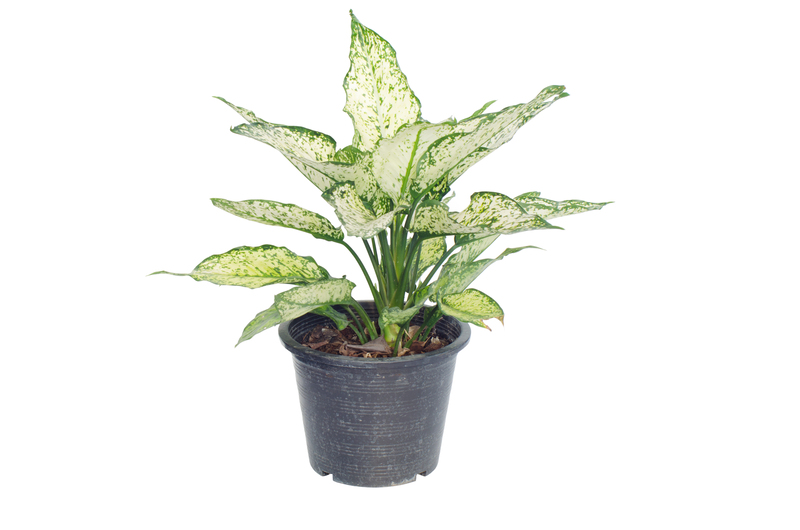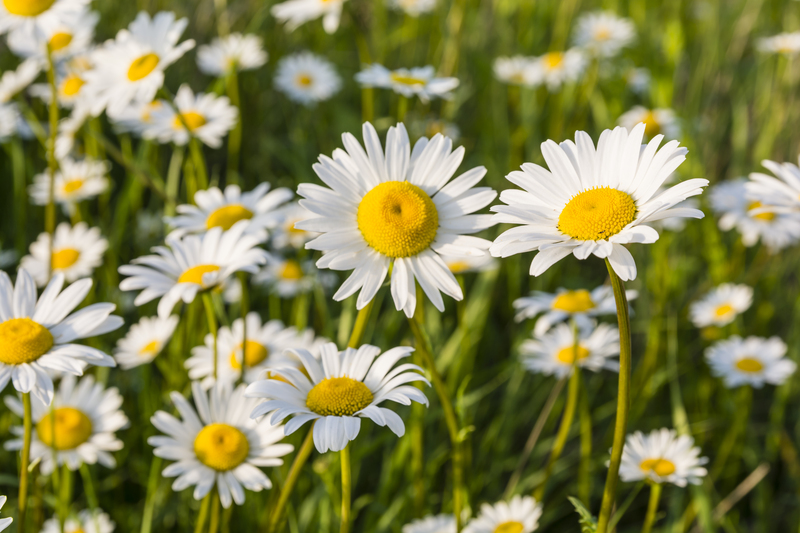Redefine Your Plant Collection with Thriving Orchids
Posted on 04/07/2025
Orchids are not just flowers; they are living works of art that can transform any ordinary collection of plants into a stunning paradise of exotic beauty. If you're looking to elevate your plant game, learning how to nurture thriving orchids is the first step towards creating a standout, diverse collection. In this comprehensive article, we'll explore how orchids can become the show-stopping centerpiece of your indoor garden and provide everything you need to redefine your plant collection with orchids.
1. Why Choose Orchids for Your Plant Collection?
There are thousands of orchid species, each with its unique appearance and care requirements. Whether you're a beginner gardener or a botanical enthusiast, there is an orchid variety for everyone. Here's why adding orchids to your plant family can redefine your indoor garden:
- Exquisite beauty: Orchids offer some of the most fascinating shapes, vibrant colors, and patterns in the entire plant kingdom.
- Long-lasting blooms: Properly cared-for orchids can flower for months, brightening your space far longer than most houseplants.
- Air-purifying benefits: Orchids are excellent natural air filters, contributing to a healthier home environment.
- Diversity and rarity: With over 25,000 species and more than 100,000 hybrids, you'll never run out of new varieties for your collection.
- Symbolism and cultural value: Orchids represent love, luxury, and strength in cultures worldwide, making them meaningful additions to any space.
Redefining your plant collection with thriving orchids not only brings a touch of the exotic, but it also offers an ongoing, rewarding experience as you care for these fascinating plants.

2. Popular Orchid Varieties to Consider
If you're ready to expand your green sanctuary, consider these iconic orchid types for both novice and advanced collectors:
Phalaenopsis (Moth Orchid)
- Beginner-friendly: Easy to grow and widely available.
- Stunning blooms: Elegant arching stems with large, colorful flowers lasting for months.
Cattleya
- Famous for fragrance: Known as the "Queen of Orchids."
- Showy blooms: Striking, fragrant flowers perfect for display.
Oncidium (Dancing Lady Orchid)
- Delicate and delightful: Masses of small, yellow or red flowers resembling dancing figures.
Dendrobium
- Versatile and diverse: Thousands of varieties, suitable for different climates.
- Long flowering period: Can yield multiple flower spikes throughout the year.
Vanda
- Vivid colors: Renowned for their intense hues and large, round blooms.
- Humidity lovers: Enjoy high-light and moist conditions.
3. Creating an Orchid-Friendly Environment
To enjoy thriving orchids in your home, it's essential to set up an environment that mimics their natural habitat as closely as possible. Here are the crucial factors to consider:
- Lighting: Most orchids prefer bright, indirect light. East or west-facing windows are ideal, though some varieties can handle filtered sunlight.
- Temperature: Orchids generally thrive in temperatures between 60-80?F (15-27?C). Avoid sudden temperature drops or drafts.
- Humidity: Aim for 50-70% humidity. If your home is dry, use a humidifier or set your orchid pot atop a tray of pebbles with water.
- Air circulation: Gentle airflow prevents fungal diseases. Avoid stagnant air by opening windows or using a small fan nearby.
Substrate and Containers
Orchids aren't grown in regular soil. Instead, they thrive best in specialized orchid bark, sphagnum moss, or coconut husk. These materials replicate the loose, well-draining environments orchids favor. Transparent pots are ideal, as they let you monitor root health and moisture levels.
4. Essential Orchid Care Tips for Thriving Plants
Begin with these fundamental care practices to keep your orchids not only surviving but thriving:
Proper Watering
- Water thoroughly but only when the potting medium is nearly dry--typically every 7-10 days.
- Avoid overwatering: Root rot is the most common issue among orchid owners.
- Use room-temperature distilled or rainwater to avoid harmful minerals.
Feeding Your Orchids
- Use a balanced, water-soluble orchid fertilizer (20-20-20) once a month during the growing season.
- During winter or dormancy, reduce feeding frequency.
- Avoid fertilizer contact with leaves or flowers to prevent burns.
Repotting
- Repot every 1-2 years to refresh the growing medium and prevent disease.
- Choose a slightly larger pot with ample drainage holes.
Pruning and Maintenance
- Prune spent flower spikes just above a node to encourage new blooms.
- Remove dead or yellowing leaves to promote vigor.
5. Preventing and Managing Common Orchid Issues
With proper care, orchids are surprisingly resilient. However, you should be aware of these common challenges:
Root Rot
- Caused by overwatering or poor drainage.
- Solution: Let the pot dry out and trim black, mushy roots before repotting.
Pests (Mealybugs, Aphids, Scale)
- Appear as fuzzy white or sticky spots on leaves.
- Solution: Wipe with a cotton swab dipped in rubbing alcohol; consider neem oil spray for infestations.
Leaf Spots or Yellowing
- Often due to too much sunlight, mineral buildup, or fungal infection.
- Solution: Adjust light, flush potting medium, and treat with a fungicide if necessary.
6. Creative Ways to Showcase Thriving Orchids in Your Collection
Orchids can be displayed in ways that highlight their unique elegance and help redefine your plant collection. Take inspiration from these creative ideas:
- Hanging baskets: Suspend orchids in stylish baskets or macrame holders for a tropical flair.
- Terrariums: Create a humid microclimate and turn small orchids into living sculptures inside glass vessels.
- Mounted displays: Affix orchids on cork bark or driftwood to mimic their epiphytic nature--ideal for bathrooms and kitchens.
- Groupings: Cluster orchids with complementary shade-loving plants like ferns or philodendrons to create mini jungle vignettes.
7. Orchid Propagation: Growing Your Collection Further
If you want to expand your orchid collection or share the joy with others, try these propagation methods:
Keiki (Offshoots)
- Some orchids, especially Phalaenopsis, produce small baby plants or 'keikis' on flower spikes.
- Allow the keiki to develop roots, then separate and plant it in its pot.
Division
- Best for sympodial orchids (like Dendrobium or Cattleya).
- Gently split the root ball during repotting, ensuring each division has healthy growths and roots.
Seed Propagation
- Advanced method--orchid seeds require sterile lab conditions and can take years to bloom.
By learning to propagate your own thriving orchids, you can further personalize and redefine your plant collection with unique varieties.
8. Inspiring Success Stories: Real Orchid Enthusiasts Share Their Journey
"Adding orchids completely transformed my living room. Their blooms seem almost surreal, and nothing matches the thrill of coaxing a new flower spike!" - Sara B., Orchid Collector
"Orchids were intimidating at first, but with the right care, they're actually forgiving. Now, they're the focus of my entire indoor garden." - Michael T., Urban Gardener

9. Frequently Asked Questions About Redefining Your Plant Collection with Orchids
- Q: Are orchids really hard to care for?
A: With proper guidance and attention to light, water, and humidity, most orchids are quite manageable! Start with Phalaenopsis for your first try. - Q: What is the easiest orchid to grow?
A: Moth Orchids (Phalaenopsis) are beginner-friendly and resilient, making them a top choice for many new orchid owners. - Q: How often should I water my orchid?
A: Once a week is a typical schedule, but always check that the potting medium is dry before watering again to avoid root rot. - Q: Do orchids need special pots?
A: While you can use decorative pots, ensure there is excellent drainage. Clear plastic orchid pots are popular as they help monitor root health.
10. Final Thoughts: Let Orchids Elevate Your Green Space
Orchids' enthralling colors, intricate shapes, and intriguing growth habits truly allow you to redefine your plant collection. With the right blends of care, creativity, and patience, even novices can cultivate thriving orchids that will wow visitors and offer year-round beauty. Begin your journey into the world of orchids today--your plant collection will never be the same!
Ready to Start Your Orchid Collection?
Whether you're revamping your plant display or starting from scratch, incorporating thriving orchids is a surefire way to add sophistication and intrigue. Explore local nurseries, online orchid vendors, and garden clubs to discover the endless possibilities waiting for you and your indoor oasis.
Share your orchid success stories and join the conversation below--let's build a vibrant, informed, and passionate orchid community together!

